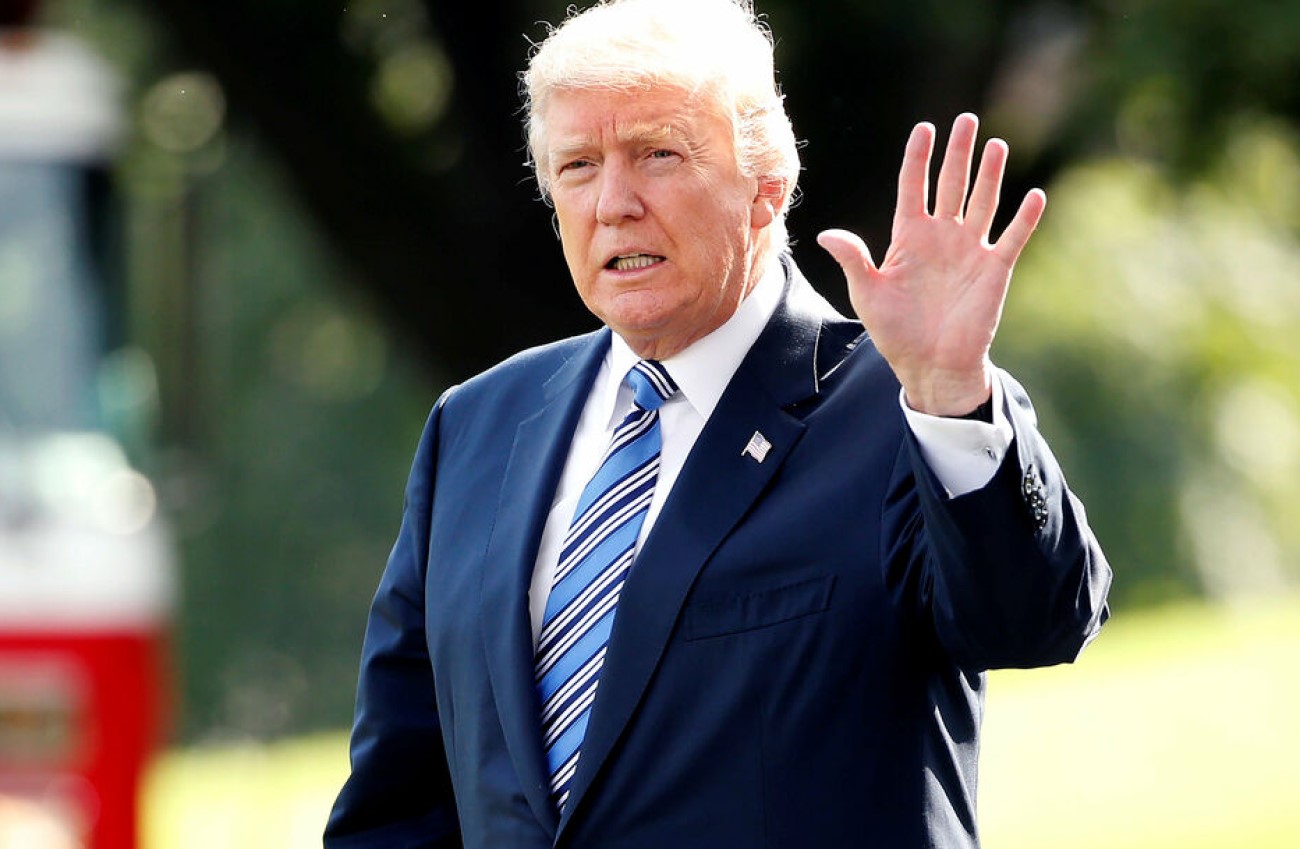Five months into his second term, Donald Trump faces a stark political reality that his team couldn’t have anticipated: his approval ratings have plummeted to their lowest levels since returning to office, revealing deep cracks in public support across virtually every major policy area. The latest polling data paints a troubling picture for a president who promised to govern differently than his predecessor, but instead finds himself grappling with declining approval on issues that were once his political strengths.
The Numbers Don’t Lie: A Comprehensive Breakdown
A new poll released by Quinnipiac University on Wednesday (June 11) revealed that just 38 percent of Americans approve of Trump’s work as president, while 54 percent disapprove overall. This represents a significant decline from his post-inauguration honeymoon period and marks the first time Trump’s approval has dipped below 40 percent during his second term.
The trajectory tells a concerning story for the Trump administration. Trump enjoyed an all-time high job approval rating of 46 percent when he returned to office in January. In February, that number slumped to 45 percent; in March, to 42 percent; and in April, to 41 percent. The June poll shows a continuation of this downward trend, with Trump losing 3 percentage points since April.
The poll was conducted among 1,265 self-identified registered voters from June 5 to June 9, with a margin of error of 2.8 percent, making it a statistically significant representation of American public opinion during a particularly turbulent period for the administration.
Issue-by-Issue Analysis: Struggles Across the Board
What makes these numbers particularly striking is that Trump is facing disapproval across virtually every major policy area, including those where he traditionally performed well.
Immigration: A Declining Strength
Perhaps most surprising is Trump’s declining support on immigration, an issue that has been central to his political brand since 2015. The poll found that 43 percent approved of how the president is handling immigration, while 54 percent disapproved. This represents a decline from April, when 45 percent approved and 50 percent disapproved of his immigration handling.
The decline comes at a particularly challenging time for the administration’s immigration agenda. Trump deployed the National Guard and later 700 Marines to Los Angeles, responding to reports of violence targeting law enforcement, particularly Immigration and Customs Enforcement (ICE) agents carrying out deportation raids. Anti-ICE protests have erupted in major cities including Los Angeles, New York, Atlanta, Dallas, and Washington, D.C., creating a backdrop of civil unrest that may be influencing public opinion.
On deportations specifically, Trump’s approval has declined from 42 percent to 40 percent, while disapproval has climbed from 53 percent to 56 percent. This suggests that even Trump’s hardline approach to immigration enforcement is not resonating with voters as it once did.
Economic Concerns: Traditional Strength Under Pressure
The economy, traditionally viewed as a potential bright spot for Trump, shows similar struggles. Just 40 percent approve of Trump’s handling of the economy, while 56 percent disapprove. While this approval rating is nearly identical to the 41 percent recorded in April, the disapproval rating has ticked up from 54 percent to 56 percent.
More concerning for the administration is Trump’s performance on trade policy. In April, 42 percent of voters approved of Trump’s handling of trade and 49 percent disapproved. Now, only 38 percent approve, and disapproval has surged to 57 percent. This decline comes despite Trump’s focus on trade as a cornerstone of his economic agenda.
This marks a break from a broader trend of modest recovery in Trump’s economic numbers, which had begun rebounding after a sharp dip in April caused by the announcement of his “Liberation Day” tariffs. The tariff policy initially rattled financial markets before stabilizing, but appears to have left lasting damage to Trump’s economic credibility.
Foreign Policy Challenges
Trump’s handling of international affairs shows even more pronounced struggles. Americans are particularly unimpressed with how Trump has handled the Ukraine-Russia war, with just 34 percent saying they approve of the president’s methods. This represents his lowest approval rating across all measured issues.
Polling analyst Tim Malloy said in a statement: “As the Russia-Ukraine war grinds through its third year, Americans make it clear they have little appetite for the way the Trump administration is handling the situation”.
Trump’s handling of the Israel-Hamas conflict also shows underwater numbers, with 35 percent approving and 52 percent disapproving, reflecting the challenging nature of Middle East diplomacy for the administration.
The Musk Factor: A Relationship Gone Wrong
One of the most dramatic developments affecting Trump’s presidency has been his very public falling out with tech billionaire Elon Musk, who had been one of his closest advisors and biggest financial supporters.
When voters were asked how they would rate the work that Musk and the Department of Government Efficiency (DOGE) have done, 38 percent say either excellent or good, while 57 percent say either not so good or poor. However, among Republicans, the picture is more positive, with 80 percent rating Musk and DOGE’s work favorably.
Malloy noted: “Though Musk isn’t as popular with Republicans as he once was, he and DOGE get a hearty high five from a healthy majority of Republicans”. Among Republicans, 62 percent have a favorable opinion of Musk, compared to 78 percent in Quinnipiac University’s March 13 poll, showing a decline in his standing even among Trump’s base.
The feud between Trump and Musk has dominated headlines and created unprecedented drama within the administration. The conflict centers around Trump’s “Big Beautiful Bill,” which Musk has publicly attacked as a “disgusting abomination”. Musk has claimed: “Without me, Trump would have lost the election, Dems would control the House and the Republicans would be 51-49 in the Senate. Such ingratitude”.
The feud escalated dramatically when Musk agreed with calls for Trump’s impeachment and even made unsubstantiated claims about Trump being in the Epstein files. This extraordinary breakdown of what was once considered a key political alliance has created chaos within Republican ranks and raised questions about Trump’s ability to maintain relationships with key supporters.
The Political Context: A Broader Pattern of Decline
These polling numbers don’t exist in a vacuum. They reflect a broader pattern of challenges that have accumulated over Trump’s first five months back in office.
Legislative Struggles
Trump’s signature “One Big Beautiful Bill” has faced significant criticism, with even some Republicans expressing concerns about its impact on the federal deficit. The Congressional Budget Office found that the budget package would raise the deficit by $3.8 trillion over the next decade, providing ammunition for critics who argue that Trump’s fiscal policies are irresponsible.
Fiscal hawks within the Republican Party, including Rep. Thomas Massie of Kentucky and Sen. Rand Paul, have sided with Musk’s criticism of the bill. This internal GOP dissent has complicated Trump’s legislative agenda and highlighted fractures within his own party.
Civil Unrest and Immigration Enforcement
The administration’s aggressive immigration enforcement has triggered widespread protests and civil unrest. Protests have erupted in major cities including Los Angeles, New York, Atlanta, Dallas, and Washington, D.C., in response to ICE deportation raids. The deployment of military forces to handle these protests has raised questions about the administration’s approach to domestic dissent and may be contributing to declining support on immigration.
International Isolation
Trump’s foreign policy approach has also faced criticism from allies and domestic observers. His handling of the ongoing Ukraine-Russia conflict has particularly drawn fire, with critics arguing that his approach lacks the strategic coherence needed to address one of the most significant international crises of the decade.
Comparative Analysis: How These Numbers Stack Up
To understand the significance of these approval ratings, it’s important to place them in historical context. In a Quinnipiac poll released on April 9, the president’s approval rating was 41 percent with a disapproval rating of 53 percent, showing the president dropping in a span of two months.
Polling averages maintained by Decision Desk HQ show Trump’s job approval rating at 47 percent approval and 49.9 percent disapproval, suggesting that while the Quinnipiac poll shows particularly stark numbers, the broader trend is consistent across multiple polling organizations.
A poll this week from YouGov/The Economist has Trump’s approval among registered voters at 45 percent and his disapproval at 53 percent, providing additional confirmation of the president’s declining support.
The Opposition Landscape: Democrats’ Struggles Too
While Trump’s numbers are concerning for Republicans, the political landscape is complicated by the fact that Democrats are facing their own challenges. According to the Quinnipiac poll, the GOP’s approval rating is 32 percent with 61 percent disapproval, but Democrats are even more unpopular, with only 21 percent approval and 70 percent disapproval.
NBC Senior National Political Reporter Sahil Kapur noted: “The congressional Democratic Party is under water with Democratic voters”, suggesting that both parties are struggling to connect with the American public during this turbulent period.
Expert Analysis: What This Means Going Forward
Political analysts are divided on what these numbers mean for Trump’s presidency and the broader political landscape.
The Carville Prediction
Democratic strategist James Carville has claimed that the Trump administration will eventually “collapse,” suggesting that Democrats need only “play possum” and watch the situation unfold. This analysis reflects a belief among some Democratic strategists that Trump’s declining approval ratings will eventually lead to broader political consequences.
Republican Concerns
Democratic Senator Chris Murphy of Connecticut posted on X: “Let me explain to you why Donald Trump’s sinking approval ratings matter. His enablers and backers will get cold feet as they feel the country turning against him”. This perspective suggests that declining approval ratings could have cascading effects on Trump’s ability to maintain support within his own party.
However, it’s worth noting that Trump has shown remarkable resilience throughout his political career, often bouncing back from periods of low approval ratings. His base of support has historically remained loyal even during challenging periods.
Policy Implications: What the Numbers Reveal
The decline in Trump’s approval ratings across multiple policy areas suggests several potential implications for his administration’s approach going forward.
Immigration Strategy Reassessment
The fact that Trump is losing ground on immigration – traditionally his strongest issue – may force a recalibration of his enforcement strategy. The visual of military forces being deployed to handle immigration protests may be creating negative associations with his immigration agenda, even among supporters who favor tough enforcement.
Economic Policy Challenges
The decline in support for Trump’s trade policies comes at a time when the administration is pursuing an aggressive tariff strategy. If public support continues to erode, it may become more difficult to maintain these policies, particularly if they begin to show negative economic effects.
Legislative Strategy
The internal Republican criticism of Trump’s “Big Beautiful Bill,” combined with the Musk controversy, suggests that the administration may need to adopt a more collaborative approach with Congress, even with members of its own party.
The Musk Effect: A Case Study in Political Relationships
The breakdown of the Trump-Musk relationship offers important insights into the challenges of managing high-profile political alliances in the social media age.
Sources familiar with the Trump-Musk relationship identified four key factors that led to Musk’s criticism of Trump: the elimination of electric vehicle tax credits that benefit Tesla, Musk’s inability to extend his government role beyond statutory limits, his failure to secure FAA adoption of his Starlink system for air traffic control, and the withdrawal of his ally Jared Isaacman’s NASA nomination.
The feud has been particularly damaging because it has played out so publicly, with both men using social media to air their grievances. This public nature of their conflict has created uncertainty about the administration’s relationship with the technology sector and raised questions about Trump’s ability to maintain key alliances.
Looking Ahead: Potential Scenarios
As Trump moves into the second half of his first year back in office, several scenarios could emerge based on these approval ratings:
Scenario 1: Recovery Through Policy Success
If the administration can achieve significant policy victories – particularly on economic issues – Trump could see his approval ratings rebound. Historical precedent suggests that presidents can recover from approval rating declines if they deliver tangible results for voters.
Scenario 2: Continued Decline and Political Consequences
If the downward trend continues, it could have significant implications for the 2026 midterm elections and Trump’s ability to advance his agenda. A prolonged feud with Musk could make it harder for Republicans to keep control of Congress in next year’s midterm elections if Musk withholds financial support.
Scenario 3: Stabilization at Current Levels
Trump’s approval ratings could stabilize around current levels, creating a challenging but manageable political environment. This scenario would likely require the administration to focus more heavily on maintaining its base while finding ways to appeal to independent voters.
The Broader Democratic Context
It’s important to note that Trump’s declining approval ratings are occurring in a context where the Democratic Party is also struggling with public opinion. Only 21 percent of voters approve of the way Democrats in Congress are handling their job, while 70 percent disapprove. This suggests that American voters are broadly dissatisfied with both parties, creating an uncertain political environment.
International Implications
Trump’s declining approval ratings, particularly on foreign policy issues, could have implications for America’s international relationships. Allies may be less willing to invest in long-term partnerships with an administration that appears to be losing domestic support, while adversaries may see an opportunity to challenge American leadership.
The particularly low approval ratings on the Ukraine-Russia conflict could limit Trump’s options for diplomatic initiatives and may encourage other international actors to take more assertive positions.
Media and Communication Strategy
The administration’s response to these polling numbers will be crucial. Historically, Trump has been most effective when he can frame political challenges as battles against established interests or media bias. However, the fact that his decline in approval spans multiple policy areas and includes issues that were traditionally strengths suggests that a more comprehensive strategic response may be needed.
Conclusion: A Presidency at a Crossroads
Five months into his second term, Donald Trump faces approval ratings that reveal significant challenges across the full spectrum of his policy agenda. From immigration to the economy, from foreign policy to his relationships with key allies like Elon Musk, the president is grappling with declining public support that could have far-reaching implications for his presidency.
The 38 percent approval rating represents more than just a number – it reflects a broad pattern of public dissatisfaction that spans traditional party lines and policy areas. While Trump has shown remarkable political resilience throughout his career, these numbers suggest that his second term is facing challenges that may be more fundamental and comprehensive than previous political obstacles.
The path forward will likely require the administration to reassess its approach across multiple policy areas, rebuild damaged relationships with key allies, and find ways to reconnect with American voters who appear increasingly skeptical of the president’s leadership.
As political strategist James Carville suggested, there may be those who believe that simply waiting for the Trump administration to “collapse” under the weight of these challenges will be sufficient. However, the complex nature of American politics and Trump’s proven ability to defy conventional political wisdom suggest that the ultimate implications of these approval ratings will depend largely on how both the administration and its opponents respond to this new political reality.
One thing is certain: with approval ratings at their lowest point of his second term and challenges mounting across multiple fronts, Trump’s presidency has reached a critical juncture that will likely define the trajectory of his remaining time in office. The coming months will reveal whether these numbers represent a temporary setback or a more fundamental shift in American public opinion about the 45th and 47th president.



